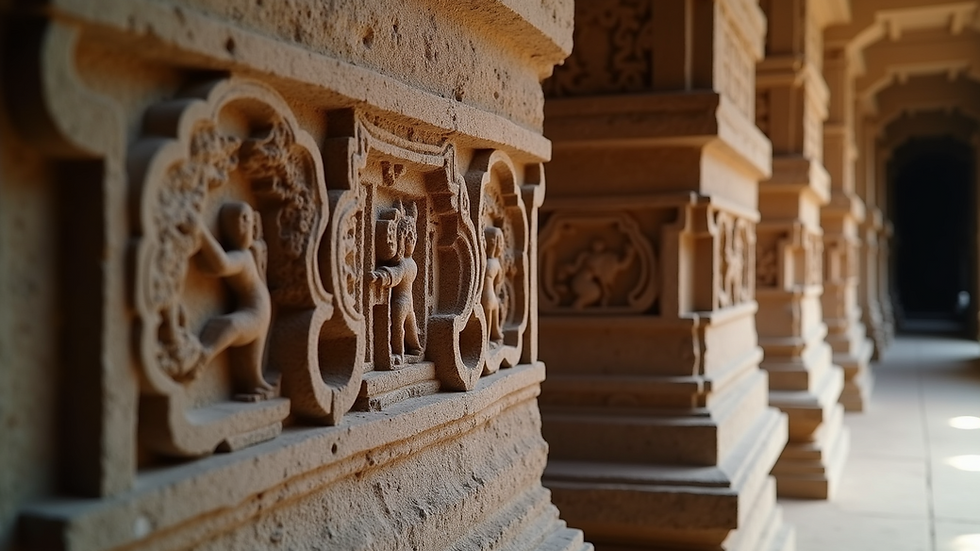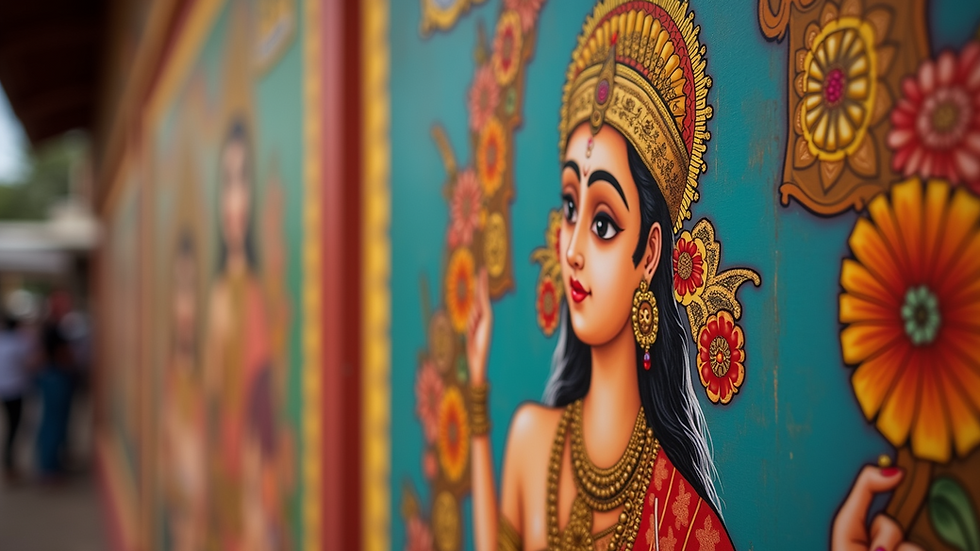Exploring the Richness of Indian Art and Heritage
- Anu Writes 73

- Aug 10
- 4 min read
India’s artistic and cultural heritage is a vast and intricate tapestry woven over millennia. It reflects the country’s diverse history, religious beliefs, and social customs. For scholars, historians, and heritage professionals, understanding this heritage is essential to appreciating the depth and complexity of Indian art. This article delves into the richness of Indian cultural artworks, exploring their origins, significance, and the ways they continue to inspire and educate.
The Diversity of Indian Cultural Artworks
Indian cultural artworks encompass a wide range of forms, from ancient temple sculptures to intricate paintings and textiles. Each region of India has contributed unique styles and techniques, shaped by local traditions and historical influences.
Sculpture and Temple Art: The temples of Khajuraho, Ellora, and Mahabalipuram showcase exquisite stone carvings that narrate mythological stories and depict deities with remarkable detail. These sculptures are not only artistic masterpieces but also serve as spiritual symbols.
Painting Traditions: Indian painting styles such as Mughal miniatures, Rajput paintings, and Madhubani art reveal the cultural narratives and aesthetics of different eras. These paintings often illustrate religious themes, royal life, and folk tales.
Textiles and Crafts: The handwoven fabrics of Banaras, the tie-dye of Rajasthan, and the intricate embroidery of Kashmir highlight India’s rich textile heritage. These crafts are deeply connected to local identities and rituals.
Understanding these diverse forms requires a multidisciplinary approach, combining art history, iconography, and cultural studies.

Indian Cultural Artworks: Symbolism and Spirituality
Indian cultural artworks are deeply embedded with symbolism and spirituality. The iconography used in sculptures, paintings, and rituals conveys complex philosophical ideas and religious doctrines.
Iconography in Temple Art: Each deity’s posture, gesture (mudra), and attributes carry specific meanings. For example, the multiple arms of Hindu gods symbolize their divine powers, while the lotus flower represents purity and enlightenment.
Mandala and Sacred Geometry: Many artworks incorporate geometric patterns that symbolize cosmic order and spiritual harmony. Mandalas, used in both Hindu and Buddhist traditions, serve as meditation aids and visual representations of the universe.
Narrative Art: Stories from epics like the Ramayana and Mahabharata are depicted in murals and sculptures, serving both educational and devotional purposes.
For researchers, decoding these symbols is crucial to understanding the cultural context and religious significance of the artworks.

What is the Indian Culture Heritage?
Indian culture heritage is a collective term that encompasses the tangible and intangible legacies passed down through generations. It includes monuments, artifacts, rituals, languages, and performing arts that define the identity of the Indian subcontinent.
Tangible Heritage: This includes archaeological sites, ancient manuscripts, sculptures, and architectural marvels. The preservation of these assets is vital for historical research and cultural continuity.
Intangible Heritage: Oral traditions, classical music, dance forms like Bharatanatyam and Kathak, and festivals form the living heritage of India. These practices keep the cultural spirit alive and foster community bonds.
Cultural Syncretism: Indian heritage reflects a blend of indigenous and foreign influences, from Persian and Mughal to European colonial impacts. This fusion has enriched the artistic vocabulary and cultural expressions.
Scholars and heritage professionals play a key role in documenting, preserving, and interpreting this heritage to ensure its transmission to future generations.

Preserving and Promoting Indian Cultural Artworks
Preservation of Indian cultural artworks requires a combination of traditional knowledge and modern technology. Conservation efforts must address environmental threats, urbanization, and neglect.
Conservation Techniques: Use of non-invasive methods like 3D scanning and digital archiving helps document fragile artworks without causing damage. Restoration projects often involve collaboration between scientists, historians, and artisans.
Educational Programs: Specialized training in Indian iconography and temple art equips scholars and heritage professionals with the skills to analyze and conserve artworks effectively. Workshops, seminars, and immersive field studies enhance understanding.
Public Engagement: Museums, cultural festivals, and guided tours raise awareness and appreciation among wider audiences. Interactive exhibitions and virtual reality experiences can bring ancient art to life for contemporary viewers.
The Future of Indian Cultural Artworks in Global Scholarship
The global interest in Indian cultural artworks is growing, driven by academic research, cultural tourism, and digital media. This trend offers opportunities and challenges for heritage professionals.
Collaborative Research: Partnerships between Indian and international universities and museums foster cross-cultural dialogue and resource sharing. Joint projects can lead to new discoveries and innovative conservation methods.
Digital Humanities: Online databases, virtual museums, and AI-based analysis tools are transforming how Indian art and heritage are studied and accessed. These technologies democratize knowledge and support remote learning.
Sustainable Tourism: Responsible cultural tourism promotes economic development while respecting local traditions and environments. Heritage sites must balance visitor access with preservation needs.
By embracing these developments, the field of Indian cultural artworks can continue to thrive and inspire future generations of scholars and enthusiasts.
Exploring the richness of Indian cultural artworks reveals a civilization’s profound connection to spirituality, history, and artistic expression. Through dedicated research, preservation, and education, this heritage remains a vibrant source of knowledge and inspiration worldwide.




Comments